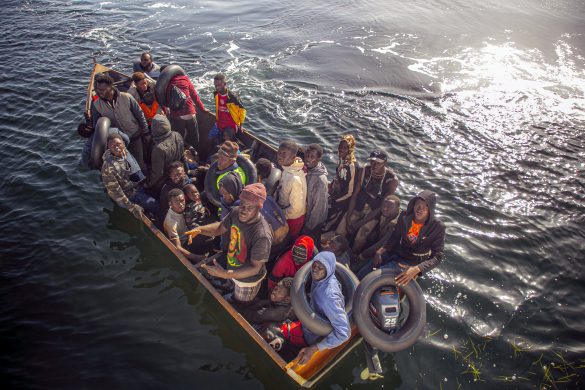Samtidig med lanceringen af den globale narkorapport for 2012 advarer FN om, at kampen mod grænseoverskridende narkokriminalitet kun vil lykkes på lang sigt, hvis den bliver en uadskillelig del af den samlede dagsorden for udvikling.
NEW YORK, 26 June 2012: Highlighting the impact of drug abuse (misbrug) around the world, the head of the United Nations anti-drugs office Tuesday said that countering transnational organized crime and illicit drugs must become an integral part of the development agenda.
“Heroin, cocaine and other drugs continue to kill around 200.000 people a year, shattering families and bringing misery to thousands of other people, insecurity and the spread of HIV,” the Executive Director of the UN Office on Drugs and Crime (UNODC), Yury Fedotov, told the General Assembly, during a special thematic debate on drugs and crime as a threat to development.
“At present, only around one quarter of all farmers involved in illicit (ulovlig) drug crop cultivation worldwide have access to development assistance – if we are to offer new opportunities and genuine alternatives, this needs to change,” Mr. Fedotov said.
The Assembly’s debate coincides with the “International Day against Drug Abuse and Illicit Trafficking”, observed on 26 June, and was also the forum for Mr. Fedotov’s launch of UNODC’s flagship study, the 2012 World Drug Report.
FN-boss: Narko-kriminalitet truer vort vigtigste mål: Bæredygtig udvikling
UN Secretary-General Ban Ki-moon said that drugs and crime threaten one of the world’s most important goals: ensuring global sustainable development.
“We cannot afford to cede ground to those who thrive on lawlessness and who use countries as stepping stones for the delivery of illicit drugs,” he said.
“We must work together to promote the rule of law and help countries bring criminals to justice, while fully respecting human rights and ensuring proportionality in our law enforcement responses.”
He added that efforts to advance sustainable development should incorporate the need to combat illicit drugs and crime, while also ensuring that drug control and anti-crime strategies are sensitive to the needs of development.
Mr. Fedotov said that with the approaching 2015 deadline for achieving the Millennium Development Goals (MDGs), there is an increasing recognition that organized crime and illicit drugs impede the attainment of those goals.
There are a total of eight MDGs, ranging from halving extreme poverty to halting the spread of HIV/AIDS, all by the target date of 2015. They form a blueprint agreed to by all the world’s countries and leading development institutions and have galvanized unprecedented efforts to meet the needs of the world’s poorest.
Mr. Fedotov noted that as developing countries emulate (efterligner) the lifestyles of industrialized nations, drug consumption will probably increase, placing a heavier burden on countries ill equipped to deal with burgeoning drug demand.
International support should therefore aim at strengthening the capacity of vulnerable nations to confront that challenge, he said.
Igen meget mere opium fra Afghanistan
The 2012 World Drug Report finds that although global patterns of illicit drug use, production and health consequences largely remained stable in 2012, opium production had rebounded to previous high levels in Afghanistan, the world’s biggest opium producer.
In addition, lower overall levels of cultivation and production of opium and coca have been offset by rising levels of synthetic drug production.
Around 230 million people, or five per cent of the world’s adult population, aged 15 to 64, are estimated to have used an illicit drug at least once in 2010, according to the Report.
Problem drug users, mainly heroin- and cocaine-dependent persons, number about 27 million, roughly 0,6 per cent of the world adult population, or 1 in every 200 people.
On OPIUM, the Report says that Afghanistan has returned to high levels of opium production. Global opium production amounted to 7.000 tons in 2011, up from 2010, when plant diseases wiped out almost half the crop yields and triggered steep price rises in Afghanistan.
Burma remained the world’s second largest poppy-crop grower and opium producer after Afghanistan, with cultivation up by 14 per cent in 2011 and a nine per cent share of global opium production.
Millioner af kokain-misbrugere
On COCAINE, the Report finds that the number of estimated annual cocaine users in 2010 ranged from 13,3 million to 19,7 million – or around 0,3 to 0,4 per cent of the global adult population. The major markets for cocaine continue to be North America, Europe and Australia.
The United States saw cocaine use decrease from three per cent in 2006 to 2,2 per cent in 2010 among adults, and in Europe cocaine use remains stable but continues to rival use in the United States. However, cocaine use is up in Australia and South America, and it is also spreading to parts of Africa and Asia.
The 2012 World Drug Report finds that the use and global seizures of AMPHETAMINE-type stimulants, the second most widely used drugs worldwide, remained largely stable.
However, in 2010, methamphetamine seizures, of around 45 tons, more than doubled those of 2008, due to significant seizures in Central America and East and South-East Asia.
In Europe, “ECSTASY” pill seizures more than doubled, from 595 kilograms in 2009 to 1,3 tons in 2010, indicating a stronger market on that continent.
There are between 119 million and 224 million estimated CANNABIS users worldwide, according to the Report, with Europe the world’s biggest market for cannabis resin, in the form of hashish, mainly supplied by Morocco, although its relative importance is declining.
Most European Union countries report the increasing indoor cultivation of cannabis herb, known as marijuana, possibly reflecting a growing preference for marijuana over hashish.
Kilde: FNs Nyhedstjeneste
Se alt om 2012 World Drug Report på
http://www.unodc.org/unodc/en/data-and-analysis/WDR-2012.html














